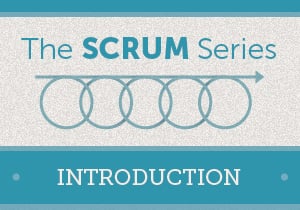The Scrum Series: Tips for Agile Project Execution

Interested in learning more about agile but not sure if it’s right for your company? Maybe our scrum series can help.
We have talked about and experimented with integrating agile methods into our process for a while now. A number of workshops, a few lunch-n-learns, several books, a project or two, and many discussions later, our approach, like the process itself, has been iterative. Not every client project is appropriate for agile workflows and many of our internal projects don’t translate well to an agile approach. Successfully implementing these methodologies into an existing process is no small feat, which is why we decided to devote not one, but a series of blog posts to exploring various aspects of this approach to executing projects.
Big Questions
In our experience, all clients want to know three things:
- Can you do my project?
- When can you get it done?
- How much will it cost?
Sure, they want to know more than that and each of the questions above begets more questions, but those are the big ones, the queries that frame nearly every first conversation with a new prospect. In this series we will explore different ways to address these valid questions using agile tactics.
But first some questions of our own.
Mighty Questions
When we started down this path our questions were many. Some we answered as we experimented (and made mistakes). Some of the bigger questions, however, consistently plagued us:
- How do we bill for an agile project?
- Can we apply our existing process to it?
- Where do design and UX fit in?
- Is agile just another word for ‘retainer’?
- When is the project ‘done’?
- Will Ashtanga or Bikram classes help?
Bad yoga jokes aside, being agile really is fundamentally rethinking everything about how you execute a project. Most companies (at least those that do what Mightybytes does) build teams based on functions. Designers work on the design phase of a project, then lob their deliverables over the wall to developers, hoping that the project manager will smooth out any potential communication errors between stakeholders. Somewhere in the mix you might also have a content developer or copywriter, a marketer, and maybe even a QA team member or two, each working in a vacuum from the other. And that doesn’t include anyone from the client side! Inevitably, this makes for a lot of “CYA moments” on the part of the project manager. Woefully inefficient, to say the least.
Agile requires that we rethink how we form teams, how those team members interact and communicate with one another, how we interact with clients, and how roles are spread across a project’s duration. If you are successful in implementation, here are just a few of the benefits you stand to reap:
- More project structure
- Better relationships (with co-workers and clients)
- A shared responsibility for success
- Fast (and accurate) project reporting
All of this should, ostensibly, make for better profits and happier stakeholders. So what are we waiting for?
Scrumming
With agile protocols in mind, James recently attended a Scrum Master training series put on by CollabNet.
What is scrum, you ask? According to authors Lindsay Ratcliffe and Marc McNeill in their book Agile Experience Design: A Digital Designer’s Guide to Agile, Lean and Continuous, “scrum is a derivative of agile and can be described as the project management rule book for applying the agile philosophy.”
James returned brimming with techniques and tools for applying agile methods to projects, which we’re covering in the next post in this series.
Brewing
To add fun to the inevitable mystery and intrigue that a scrum workshop would facilitate, we coupled our recent scrum endeavor with something we love: brewing beer! While the hoppy aromas of a Zombie Dust clone filled the office halls, our conference table was filled with index cards and Sharpies. I think this user story best sums it up:
“As a Scrum Master-in-training, I brew beer so that I can better understand the mysteries of agile.”
Obviously as we delve further into these methodologies there will be more scrumming and less brewing, but this was a nice exercise that helped cover the inevitable down times that occur in the brewing process. Oh, and did I mention we roasted marshmallows too? This is how you infuse fun into what you do.
Free Download: Agile White Paper
Want to learn more on this topic? Our white paper on agile methods will show you how to manage complex projects with ease.
Download the White Paper


